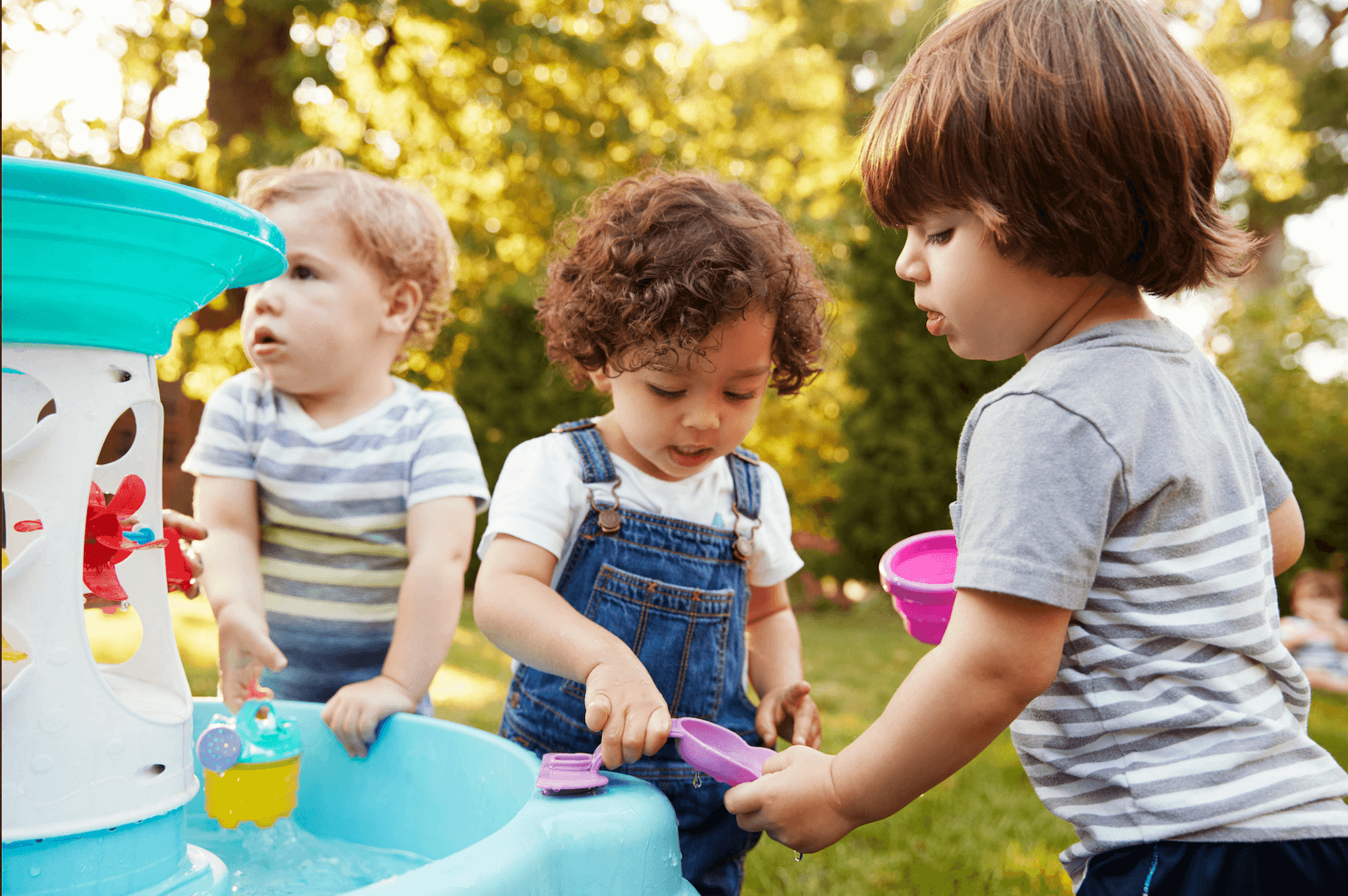Games to Play with Toddlers
Playing toddler games at home can be a fun and effective way to promote language skills. In this blog post, we'll explore three engaging games for toddlers and I’ll give you pro tips on how you can support language development during these activities.
Here are our activities:
Game 1: Flashlight Hide and Seek
Flashlight hide and seek is an exciting game that's not only super fun for your toddler but also helps them get better at talking. Here's how it goes:
Pick Your Items: Start by choosing the things you want to hide. You can use regular stuff you use every day, like kitchen items (spoon, fork, plate, etc.), or your child's toys. If you have more than one of the same thing, like several spoons, hiding them can be a cool way to say the same word lots of times!
Hide 'Em: Next, hide those things around your house. While you're hiding stuff, talk about what you're doing. For example, you can say, "I'm hiding the spoon under the chair," or "You hid the spoon on the pillow."
Flashlight Fun: Now, give your kiddo a flashlight. This makes the game even more exciting and keeps their attention. Encourage them to use the flashlight to find the hidden objects.
Ask Questions: While your child is looking for the hidden stuff, you can practice asking questions like, "Where is it?" or "Is it under the couch?" Then, answer with yes or no.
Celebrate Finds: When your toddler finds something, say what it is, like, "The fork! We found it!" Listen for your child to say the names of things or copy the words you say.
In the Bag: You can also put the things you find in a bag and say "in the bag" each time. This helps your child learn the names of things, words like "in" and "under," and lets them practice asking questions.
This game can be adjusted based on your child's level. At first, they might just point to places or raise their hands to ask a question. Then, they'll start repeating some of the words you're using. Eventually, they'll say the words all on their own. You can use the same game and tweak it to fit what your child is ready for, whether they're using gestures, words, or sentences. Have a blast with it! 🕵️♂️🔦😄
Game 2: Obstacle Course
Obstacle courses are a fantastic way to get toddlers moving and boost their speech and language skills. Here's how to create one and play this fun toddler game at home:
Design Your Course: Start by setting up the obstacle course itself. Your little one might want to help, or they might not, and that's okay too! Your course doesn't have to be super tricky. It can be as simple as putting three pillows on the floor or making a hopping line with painter's tape. If your toddler wants to get creative, let them (as long as it's safe). But rest assured, you don't need to be an architect to make a cool obstacle course at home!
Practice Run: If this game is new for your toddler, show them how it's done. Make it look and sound super fun! As you go from the start to the finish of your obstacle course, use words like "hop," "jump," or "crawl." Watch for your child to copy you and name the actions they're doing. This helps them learn those action words.
Ready, Set, Go!: Once you both know the obstacle course, add some excitement with "Ready, Set, Go!" Say it as you or your child race through the course. This makes waiting for the "Go" part a cool game. Then, name the actions again.
Pronouns: Let's practice pronouns because why not? Say things like "my turn" and "your turn" when you switch turns in the obstacle course. This teaches your child about pronouns like "I," “me,” "you," and "mine."
Do It Again: Keep doing the obstacle course over and over as long as your child is having fun. Remember, practicing lots of times with new skills is a big help when you're teaching your child new stuff!
Like with anything, you can change the obstacle course to fit where your child is in their talking and understanding journey. Make it even more fun by adding sounds like "Yay!" and "Woah!" or "Oh-no!" if your child is just starting to copy sounds and say words. If your toddler is saying some words on their own, focus more on action words. And listen for things like "Mom jump!" if your child is starting to put words together all by themselves. Have a blast and keep on playing! 😄🏃♂️🏁
Game 3: "Basketball"
This simple "basketball" game is not just loads of fun; it's a great way to improve your speech and language skills. Whether it's a bean bag into a basket, a stuffed animal into a box, or a ball into a hoop, you can play it right at home. Here's how:
Pick Your Item: First, choose something you want to "shoot" and a container to throw it into. It can be a ball, a stuffed animal, a bean bag, or really anything you have handy. It's even more awesome if it's something your child really likes. They'll be excited about the game, and you can teach them words related to things they love!
Say the Right Words: While playing, keep saying specific words like "ball," "go," "throw," "in," and "yay!" This helps your toddler connect words with what they're doing.
Take Turns: Make sure you both take turns when you play. Use phrases like "my turn" and "your turn" to show the idea of sharing and waiting. This also introduces your child to pronouns, which are words we use to talk about different people.
Mix it Up: Make the game more exciting by trying to throw the item "backwards" or from "far away." You can even give silly directions like "Close your eyes and try to throw it" or "spin around, then throw the ball."
Play Lots of Times: Keep playing as long as your child is interested. The more you repeat the game with the same words and new skills, the easier it is for your child to learn.
This game is a fantastic way to practice speech and language skills with your child at home. You can mix things up by using different items to shoot and different items to catch your stuff. You could even create both a small and a big basket to catch your items in one game. This way, you can practice with both big and small things. The possibilities are endless, but the most important thing is that you're having a blast and bonding with your little one! 🏀😄👏
More games to play with toddlers indoors!
Discover more from the blog:
Written By: Stephanie Hatleli, MS CCC-SLP
© 2020-2025. Stephanie Keffer Hatleli, MS CCC-SLP. All Rights Reserved.
The content offered on ToddlerTalk.com is for informational purposes only. Toddler Talk is not engaged in rendering professional advice, whether medical or otherwise, to individual users or their children or families. No content on this site, regardless of date, should ever be used as a substitute for direct medical advice from your doctor, speech-language pathologist, or other health professional. By accessing the content on ToddlerTalk.com, you acknowledge and agree that you are accepting responsibility for your child’s health and well-being. In return for providing you with information related to home speech and language practice, you waive any claims that you or your child may have as a result of utilizing the content on ToddlerTalk.com.








Explore language tips for potty training tailored to your child's communication stage. From toddlers who are just beginning to talk to children speaking in sentences, learn how to use gestures, sign language, storytelling, and consistency to support your potty training journey.